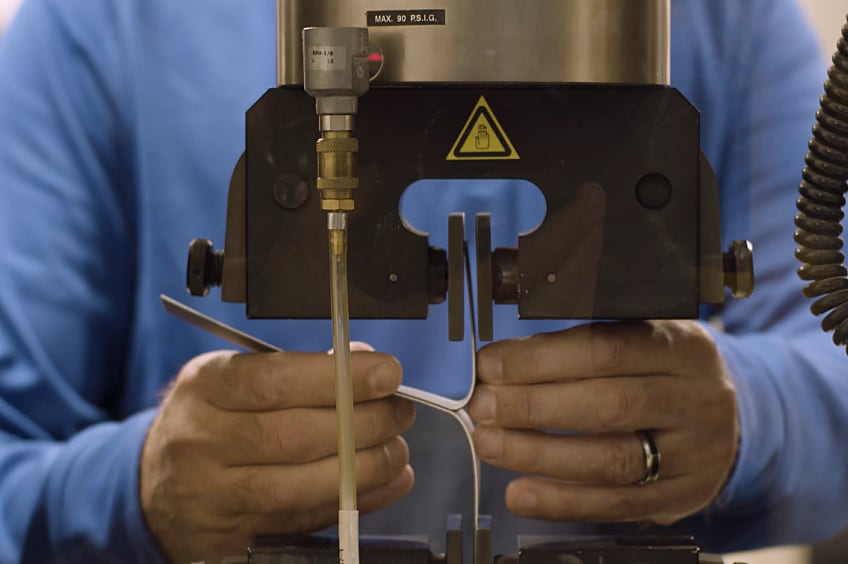One of the selling points of heat-weldable single-ply membranes is that fully welded seams help create a singular membrane out of multiple sheets. There are no adhesive seams to pop loose, and a properly welded seam may provide even greater protection than the rest of the membrane because it's twice as thick. This all sounds good, but how does the manufacturer test weld strength?
Here is a look at how we test weld strength at GAF:
The first step is to weld some TPO with the same equipment and settings that are used on a roof. In fact, we make many welds at varying speeds and temperatures to cover most conditions.
A strip is then cut and pulled to check quality. Here's a cross-section of what a weld cut actually looks like:
At GAF, we use machine test equipment made by Instron that enables us to measure the actual strength. The sample gets mounted between two steel jaws and pulled as shown here:
The machine records the force needed to make the pull. If you look at the center picture, you can see that the cap layer has just broken. After that, the cap peels away from the core, as can be seen in the right-hand picture. If the weld itself opens up, then it's a bad weld. The picture on the right shows what we call a film tearing bond. We've torn the cap or core film right off the membrane, exposing the reinforcement fabric. Our tester reports the force as a graph that looks like this:
This shows that it took a peak force of around 48 pound-force to break the cap or core. Then, to peel the cap from the core, it took around 20 pound-force. These are strong numbers.
We recommend roofers do a manual test weld at the start of each day, after lunch, and whenever conditions have changed. This ensures that the product welds and is the same strength day after day, mile after membrane mile!





